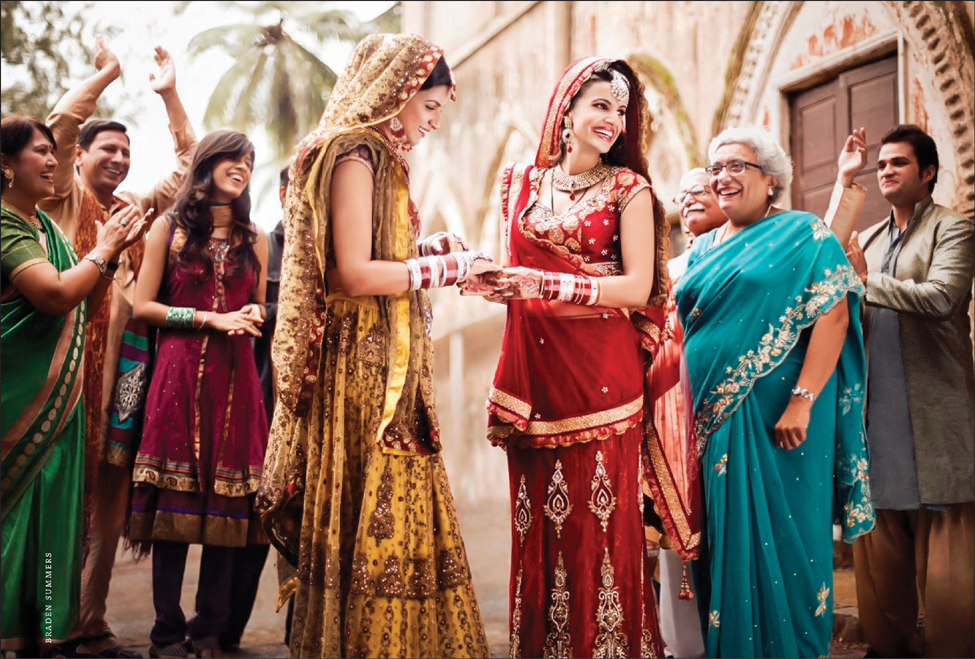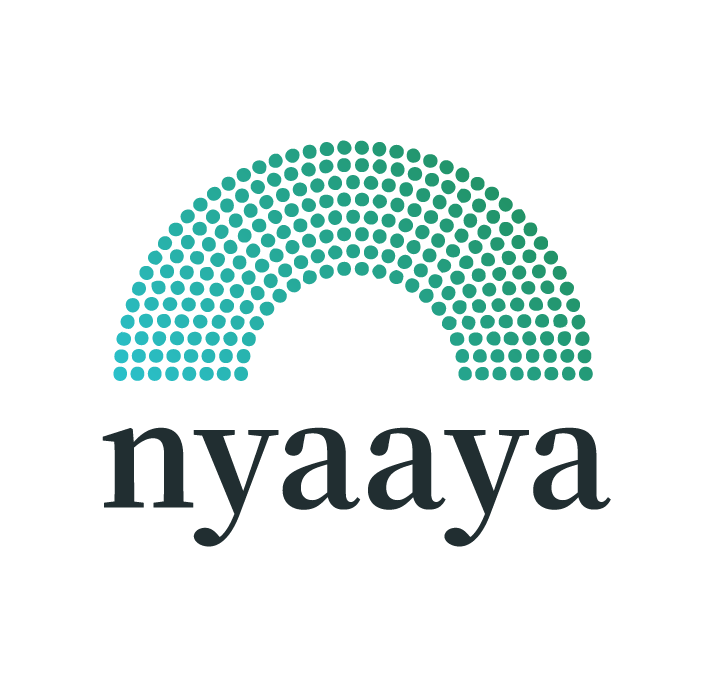By Smarnika Srivastava


The right to marry is a part of the right to life under Article 21 of the Constitution of India, 1950. This was also established in the landmark case of Lata Singh v. State of Uttar Pradesh (2006)1 where the Supreme Court of India upheld the right of an individual to marry any person of their choice and recognised the same as a fundamental right. In India, same-sex relations were not recognised up until 2018 recently, when Article 377 was read down by the Supreme Court of India in Navtej Johar v. Union of India (2018)2, after which homosexuality has been decriminalised. But still, the marital union between same-sex couples is not recognised by law in India and consequently, they are not entitled to any spousal privileges, those being adoption rights, inheritance rights, etc.
If we take a look at our Constitution and various laws, neither the laws nor the Constitution of India, 1950, mention people of the queer community as a subject. Even in the Navtej Johar judgement, though the judges discuss various foreign cases which have legalized same-sex unions in other countries at length, they refrained from making any comments about whether such unions need to be given marriage or civil union rights in India or not. Merely decriminalizing sexual intimacy between same-sex couples would not place them at an equal footing with heterosexual couples. This can only be done by affirmative action in their favour, otherwise, they would be subject to the same unequal and discriminatory behavior for years to come. Same-sex relations are still seen with the lens of shame in India, and this has a lot to do with the obsession over marriage which is seen as a necessity. Along with marriage (heterosexual) also comes various rights which unmarried couples (except those in long term live-in relationships) do not have.
Heteronormative Marriage Laws: Is Law Really Equal For All?
Due to the religious and cultural diversity in India, people are free to choose the religious law under which they want to get married. Some of these laws include the Hindu Marriage Act, 1955, Muslim Personal Law (Shariat) Application Act, 1937, Indian Christian Marriage Act, 1872, Special Marriage Act, 1954 etc. These laws have been applied as well as legally interpreted in a heteronormative manner till date, having no space for same-sex relationships.
Hindu Marriage Act, 1955
The preamble of the Hindu Marriage Act, 1955 explicitly states that the Act applies to “any two Hindus” and does not say that one of them should be a man and the other should be a woman. However, if we look at Section 5 of the same law, it states words like “bride” and “bridegroom” which points out to the presumption of heteronormativity of relationships while drafting the law.
Indian Christian Marriage Act, 1872
Under Christian law, there is a heterosexual notion to marriage despite a lack of any explicit definition of marriage stated anywhere in the law. However, for example, if we look at Section 60, it states that the age of man should be 21 and the age of the woman should be 18. Drafting of such provisions in the law indicates the heterosexual notion intended for this law.
Muslim Personal Law (Shariat) Application Act, 1937
In Muslim law too, though marriage is governed by their personal laws, it is seen as a civil contract. Since the purpose of the civil contract is procreation3, this again presumes the heterosexual nature of muslim marriages.
Special Marriage Act, 1954
If we take a look at the Special Marriage Act, which is open to all religions and is a secular law, there are certain heterosexual underpinnings to it. For example, when it defines what prohibited relationships are, it uses words like man and woman.
Adoption Laws
Because same-sex marriages are not recognised in India, such couples do not get a lot of benefits that heterosexual couples do, such as the right to inherit spouse’s property, maintenance, guardianship etc. Even the adoption laws in India, such as the Hindu Adoptions and Maintenance Act, 1956 (“HAMA”) and the secular Juvenile Justice (Care and Protection of Children) Act, 2015 do not provide for same-sex couples to freely adopt a child of their choice. For instance, in the HAMA, 1956, Section 7 mentions the capacity of a male to take a son or daughter for adoption. The proviso to this mentions that such a man has to take the permission of his “wife”.
It is very clear that all personal laws have heterosexual underpinnings to them, thus, leaving no room to accommodate for same-sex marriages under these acts. This socio-economic marginalisation and othering that the queer community has to undergo has also been judicially acknowledged in the case of Shivani Bhat v. State of NCT of Delhi and Ors. (2015)4 where a transgender man was illegally confined in his grandparent’s home solely on the basis of his gender identity.
Another aspect to marriage, commonly seen in India, is the freedom which married couples have to declare and express their love publicly, thus legitimizing their relationship even further. India has always had a heteronormative culture where free space has not been created for the LGBTQ+ individuals to freely express their love for their partners because of which their love is not seen as something that is real and worthy of respect. The government plays a key role in legitimizing marriage unions by conferring benefits on married couples and becomes an agency which confers recognition and grants dignity to marital unions, thus, sidelining same-sex unions and treating them in an inferior way.
Judith Butler, a queer feminist and gender theorist said in an interview that when an entity places heterosexual and same-sex relationships relations on a different footing altogether, what is actually taken into account is their sexual orientation solely, and not their marital status. That being said, if we take the case of Navtej Johar (though the bench refrained from giving out a ruling on same sex marriages per se), Chief Justice Misra and Justice Khanwalikar, in their respective conclusions, said that if one discriminates solely on the basis a person’s sexual orientation, it would lead to a violation of their freedom to express, which is a fundamental right.
Choosing a person for marriage: A Fundamental Right
At this point, it is imperative to discuss the case of Shakti Vahini v. Union of India (2018)5. Shakti Vahini is an NGO which filed a petition in the Supreme Court to take preventive actions against honor crimes. Justice Deepak Mishra, the then Chief Justice, started the judgement by quoting from Simone Weil- “Liberty, taking the word in its concrete sense consists in the ability to choose.”. The Apex Court, in this case, came to the conclusion that marrying a person of one’s own choice is a fundamental right which should be accessible to all adult persons.
In another case of Shafin Jahan v. K.M. Ashokan & Ors. (2018)6, which was relied on by the Navtej Johar judgement, it recognises the right of a Hindu woman to freely convert to Islam and marry a Muslim man. The Supreme Court held that it is the constitutional right of a citizen of India “to be able to live her life on her own terms” and that “curtailment of the expression of choice of an individual will destroy the individualistic entity of a person”.
If we read the cases of Shakti Vahini, Shafin Jahan and Navtej Johar together, we can effectively come to the conclusion that there is room to argue for same sex marriages in India through a combined reading of these cases. Although in the case of Navtej Johar, the judges did not delve into any discussions on the topic of same sex marriages, but they did recognise the LGBTQ+ community as a sexual minority which has borne the brunt of hostile discrimination without any justification. Article 15 of the Constitution of India, 1950 prohibits discrimination on certain grounds alone. In the Navtej Johar case, Justice Indu Malhotra said that Article 15 should be extended to include the ground of sexual orientation, so that discrimination on the grounds of sexual orientation alone should mean that the Article is being violated, which in turn would violate a person’s fundamental rights.
Same-sex Live In Relationships In India
In India, another bone of contention apart from same-sex marriages, are live-in relationships. Due to the historical norms of the society, a couple, regardless of sexual orientation, living together without being married to each other are seen with a suspicious eye. Live-in relationships have been recognised as “domestic relationships” which are in the nature of marriage under section 2(f) of The Protection of Women from Domestic Violence Act 2005. This makes it amply clear that the Indian society is so fixated on marriage as a concept that even live-in relationships have to pass the added criterion of reflecting those outdated norms. This implies that if the Court is of the opinion that the live-in relationship is not of the nature of marriage, the resultant rights will not accrue to such a couple. In the case of S.P.S. Balasubramanyam v. Suruttayan (1994)7, the Supreme Court ruled that a man and a woman living together under one roof for a couple of years will be presumed to be husband and wife, hence, a child born to them will be deemed to be legitimate and all the legal rights which are automatically applied to lawfully wedded couples will also apply to them. In another case of Indra Sarma v. V.K.V. Sarma (2013)8, the Supreme Court held that a woman who begins to live with a man not knowing that he is already married would still be considered as a “domestic relationship” under the Domestic Violence Act, 2005. Section 2(f) of the DVA, 2005, uses the language “any two persons” to signify couples under the purview of “domestic relationships”. This is clearly a general law, and can be interpreted to cover even same sex couples living together under the same roof. But, unfortunately, the Court in the case of Indira Sarma choses to observe that the clause refers to two persons of the opposite sex, on the ground that Section 2(a) defines an “aggrieved person” as a woman, hence, not taking same-sex couples under its purview. These rights, such as inheritance, right to nominate partner as nominee in gratuity, pension etc., child adoption rights etc. which have been given to heterosexual couples do not apply to same-sex couples.
On the contrary, in September 2020, the Orissa High Court in the case of Chinmayee Jena v. State of Orissa (2020)9, upheld the right of a transgender man to be in a live-in relationship with his same-sex partner and self-determination of sex/gender. The court further upheld that all the protections given to women under the Domestic Violence Act, 2005 would apply to the woman partner in this case too. In another case of Madhubala v. State of Uttar Pradesh (2020)10), the Uttarakhand HC held that same-sex couples have a right to live together, and such a consensual relationship where such couples are co-habiting cannot be held to be illegal, because right to determination and choice of sexual orientation in partner is a fundamental right under Article 21. But the court went on to mention that in India, still, the LGBTQ+ individuals cannot enter into a wedlock, hence reiterated the fact that same-sex couples still do not have the rights given to heterosexual couples post marriage.
Conclusion
Even though the Constitution of India enshrines us with the freedom of self-determination and the choice of a life-partner, India’s attitude towards same-sex marriages is still restrictive. The laws either have an explicit heterosexual underpinning to them, or, generic provisions have been interpreted to cater to heteronormativity. A relative change in the attitude of the judiciary has been observed with respect to making space for the LGBTQ+ community to exercise their rights and to be able to live with a partner of their choice. However, still, we are much away from handing them equal rights afforded to heterosexual couples – that of same-sex marriage and the resultant benefits that come from it.
This blog is a two part series. Part I of the series discusses the attitude of the Indian society as well as the Indian legislative and judicial system towards same sex marriages in India. Keep an eye out for Part 2 titled ‘Can Same Sex Marriages be Legalised in India’ where the author argues for legalising same sex marriages in the Indian legal framework.
____________
Smarnika Srivastava is a fourth year BA, LL.B student at O.P. Jindal Global University. Views are personal.
- SC (2006) 5 SCC 475[↩]
- AIR (2018) SC 4321[↩]
- Sanjan v. Azara (2013) Mat. Appeal No. 405 of 2011[↩]
- Shivani Bhat v. State of NCT of Delhi (2015) 223 DLT 391[↩]
- Shakti Vahini v Union of India (2018) SCC 7 192[↩]
- AIR 2018 SC 357[↩]
- (1994) 1 SCC 460[↩]
- (2013) 15 SCC 755[↩]
- WP CrL 57 of 2020[↩]
- Habeas Corpus P. No. 8 of 2020 (Uttara. HC[↩]


